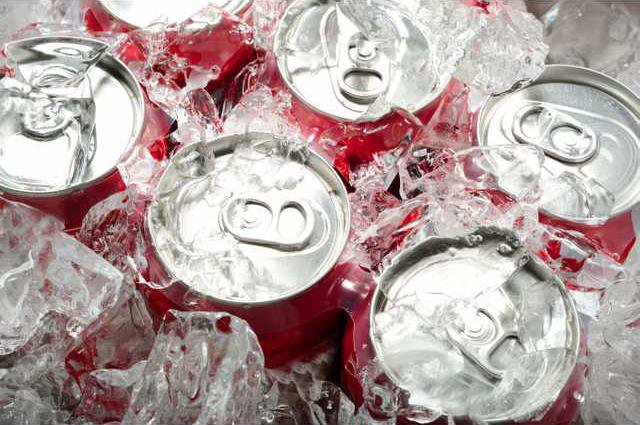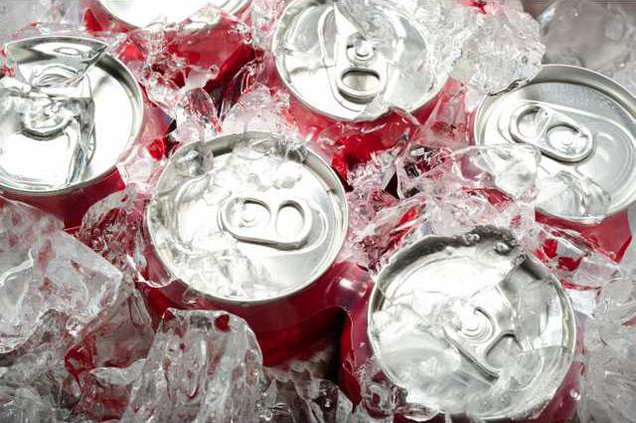A researcher who has spent four years calculating the calorie burn that juice, soda and other "treats" would entail believes people would make better food choices if they knew the truth: If you drink a soda, then you'd need to run for 50 minutes to burn the calories off.
The result of efforts to link nutrition and exercise data by Sara Bleich, associate professor at Johns Hopkins Bloomberg School of Public Health, is outlined in the American Journal of Public Health, along with findings on how well the idea works. She thinks it makes sense.
"Some would say that's a joyless, infantilizing idea," writes James Hamblin for The Atlantic. "The implication that people can't understand calorie counts is unduly cynical. Have a Coke and a smile, not a Coke and a guilt-wail. Others would protest on grounds that it's impossible to make this kind of exercise requirement universal to people of all ages, body sizes and levels of fitness. Everyone burns calories at different rates."
For the study, researchers put signs next to soda and juice in neighborhood stores in Baltimore that read, "Did you know that working off a bottle of soda or fruit juice takes about 50 minutes of running?" There were similar signs about juice and what it would require to burn calories. The researchers noted that juice and soda sales dropped and many who did buy purchased smaller sizes.
According to WebMD, "The researchers observed nearly 3,100 drink purchases at the stores by teens between the ages of 12 to 19 years. They interviewed 25 percent of the youngsters. Of the 35 percent of teens who said they saw the signs, 59 percent said they believed the information on the signs and 40 percent said they changed their purchases as a result."
In the study abstract, Bleich and colleagues concluded that "providing caloric information was associated with purchasing a smaller sugar-sweetened beverage, switching to a beverage with no calories, or opting to not purchase a beverage; there was a persistent effect on reducing SSB purchases after signs were removed."
"This is a very low-cost way to get children old enough to make their own purchases to drink fewer sugar-sweetened beverages, and they appear to be effective even after (the signs) are removed," Bleich told Robert Preidt, a WebMD HealthDay reporter.
Many health experts say Americans really don't understand the relationship between food choices and calories and what that means in terms of weight gain without exercising to work it off.
"That concern is the impetus for a growing movement to make nutrition information as simple and practical as possible. Some have proposed a three-tiered stoplight system, where healthy foods are labeled with a green light (Go!), and junk bears a damning red. Yellow is ... everything else. Others have proposed an even simpler thumbs-up, thumbs-down dichotomy," Hamblin wrote.
He notes that there are differences in calories from different sources and that not everyone metabolizes things the same.
NPR's Allison Aubrey wrote that "when (Bleich) started the research project, she drove through the Baltimore neighborhoods where the study was to be carried out. These neighborhoods are 'low-income, heavy drug use,' Bleich says. (There are) all sorts of social disadvantages.' And she recalls thinking, 'Who the heck is going to care how many calories are in the sodas that they're drinking?'
"But, now that she's documented that the signs do make a difference, she says she's very encouraged."
Her college's Facebook page includes an interview with Bleich on how to link nutrition and exercise information in ways that move the needle on the scale.
Others have considered calorie information important. As the U.S. Department of Agriculture noted in September, "The 2010 Patient Protection and Affordable Care Act includes provisions requiring all chain restaurants with 20 or more locations to provide calorie information on menus. Information on other nutrients — fat, saturated fat, cholesterol, sodium, total carbohydrates, sugars, fiber and total protein — would have to be available in written format on request. The U.S. Food and Drug Administration is finalizing regulations to implement these provisions of the law."
Agriculture's own research, unrelated to Bleich's efforts, concluded that having correct nutrition and calorie information would change the behavior of at least some consumers.
Email: lois@deseretnews.com, Twitter: Loisco
Have a soda and a 50-minute run





